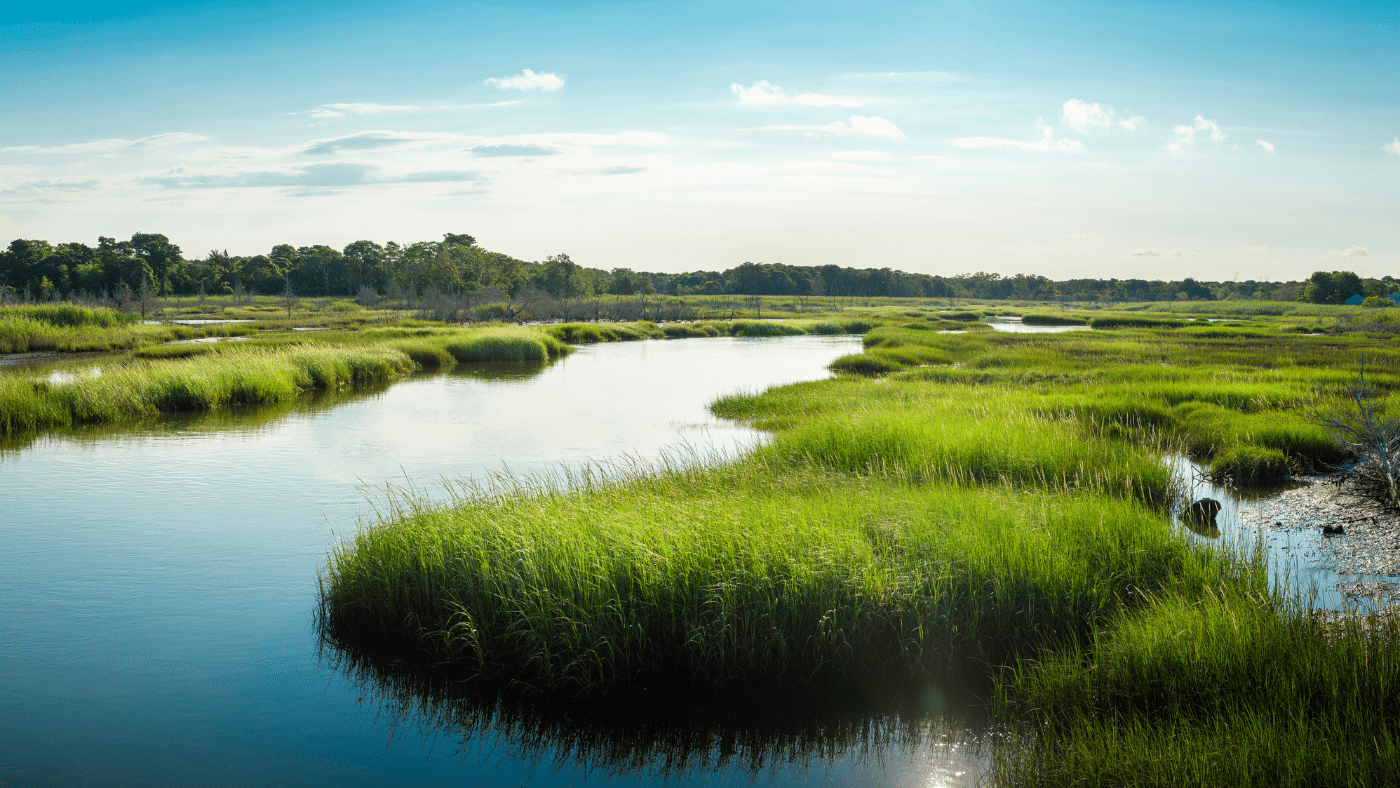Wetlands Permitting in Massachusetts
State Regulations: Wetlands Protection Act
The Massachusetts Wetlands Protection Act (310 CMR 10.00), effective as of October 24, 2014, provide standards for activities within inland and coastal areas subject to protection. Inland resources include, but are not limited to bordering vegetated wetlands, riverfront area, banks, and land subject to flooding. Areas such as coastal beaches, salt marshes, land under the ocean, and coastal beaches fall within the coastal wetlands category.
In addition to the resource areas themselves, there is often a buffer zone or extended area of protection associated with wetlands. For example, a 100-foot buffer zone extends from the edge of a bordering vegetated wetland and riverfront area is defined as the land within 200-feet of a river’s mean annual high-water line. Work within these extended zones is often regulated differently than work directly within the area. A permit is required for work within the resource area and/or its buffer zone.
Local Regulations
In addition to State regulations, many municipalities impose their own wetlands permitting regulations to expand on the requirements of the Wetlands Protection Act. These additional regulations often include increased limitations of work within jurisdictional or restrictions on work that can occur in certain areas. Common types of these additional requirements include:
- No Disturb Zones: No Disturb Zones are local restrictions that prohibit disturbance within an area that is a certain distance from the wetland. A typical No Disturb Zone is between ten and twenty-five feet from a resource area.
- No Build Zones: No Build Zones prohibit building structures within an area that is a certain distance from the wetland. The area associated a No Build Zone can vary greatly depending on the municipality. Some No Build Zones can extend fifty feet from the resource area.
It is important to review both State and local regulations when considering the development potential for a parcel of land.
Permitting Process
Wetlands permitting typically starts with the local Conservation Commission by filing design plans and permitting documents. The Commission receives these documents, reviews them, and discusses the project at a public hearing. The Massachusetts Department of Environmental Protection (MADEP) must also receive a copy of the wetland permitting submission and will provide their own comments.
Prior to submitting permitting documents, a wetland scientist needs to delineate the limits of the wetland resource areas and a civil engineer will prepare site design plans showing the proposed project and its impact to the wetland resource areas. There are several typical wetlands permits submitted to the Conservation Commission for review and approval:
- Abbreviated Notice of Resource Area Delineation (ANRAD): An ANRAD is submitted to only receive approval for the wetland delineation and not the project itself. Once the delineation is approved, the project team can proceed with the design knowing that the Commission agrees with the location of the wetlands and their associated buffer zones.
- Request for Determination of Applicability (RDA): The purpose of an RDA is to have the Conservation Commission determine if the proposed work exceeds the requirements of the local and State regulations. If the project does exceed then additional, more detailed wetlands permitting is required. Typically, an RDA process is applicable to small projects with limited disturbance within jurisdictional areas.
- Notice of Intent (NOI): A NOI is the most intensive wetlands permitting process and requires extensive detail for the work performed in the resource areas. The design needs to meet State and local requirements for stormwater management and mitigation for disturbances within jurisdictional areas. Projects with direct wetland impacts or extensive disturbance in the buffer zones will need to submit a NOI to the Conservation for the wetlands permitting process.
VERTEX’s Qualifications
Local and State regulations are filled with nuance and varied requirements based on location and the impacted resource area. VERTEX has the qualifications and experience to successfully navigate the permitting process and gain approvals from the wetlands permitting authorities. To learn more about VERTEX’s Engineering Design services or to speak with an Engineering Expert, call 888.298.5162 or submit an inquiry.




